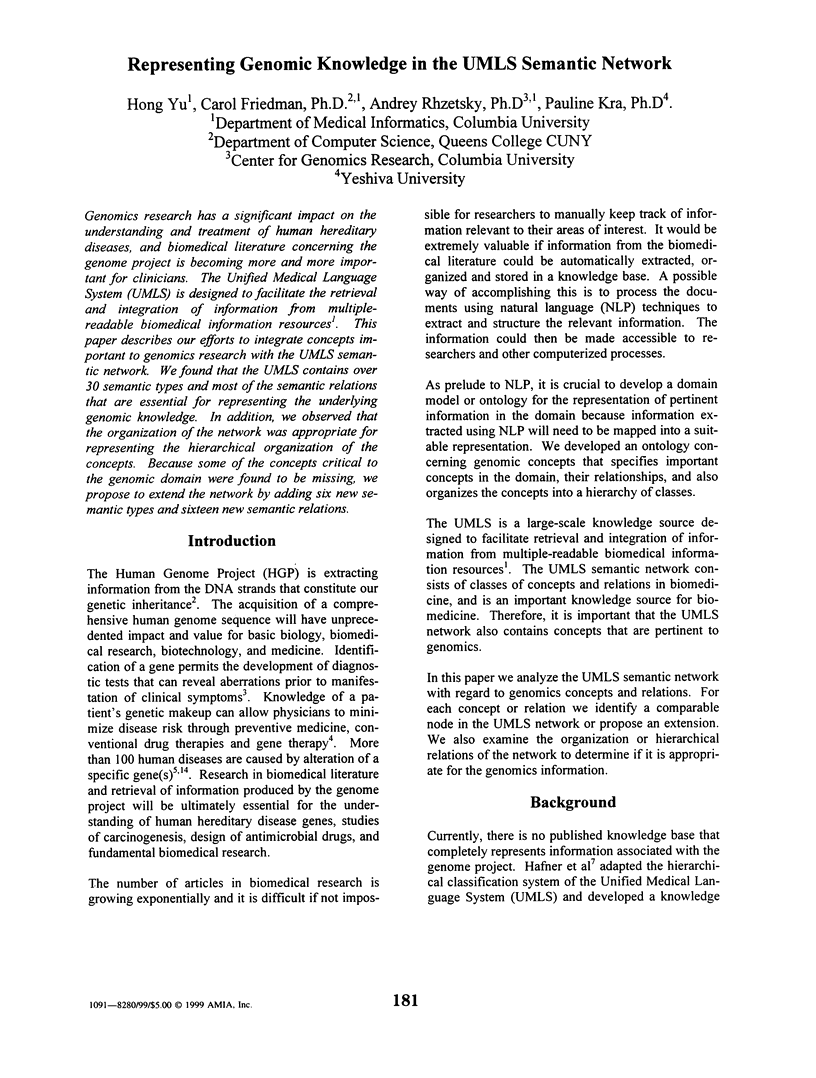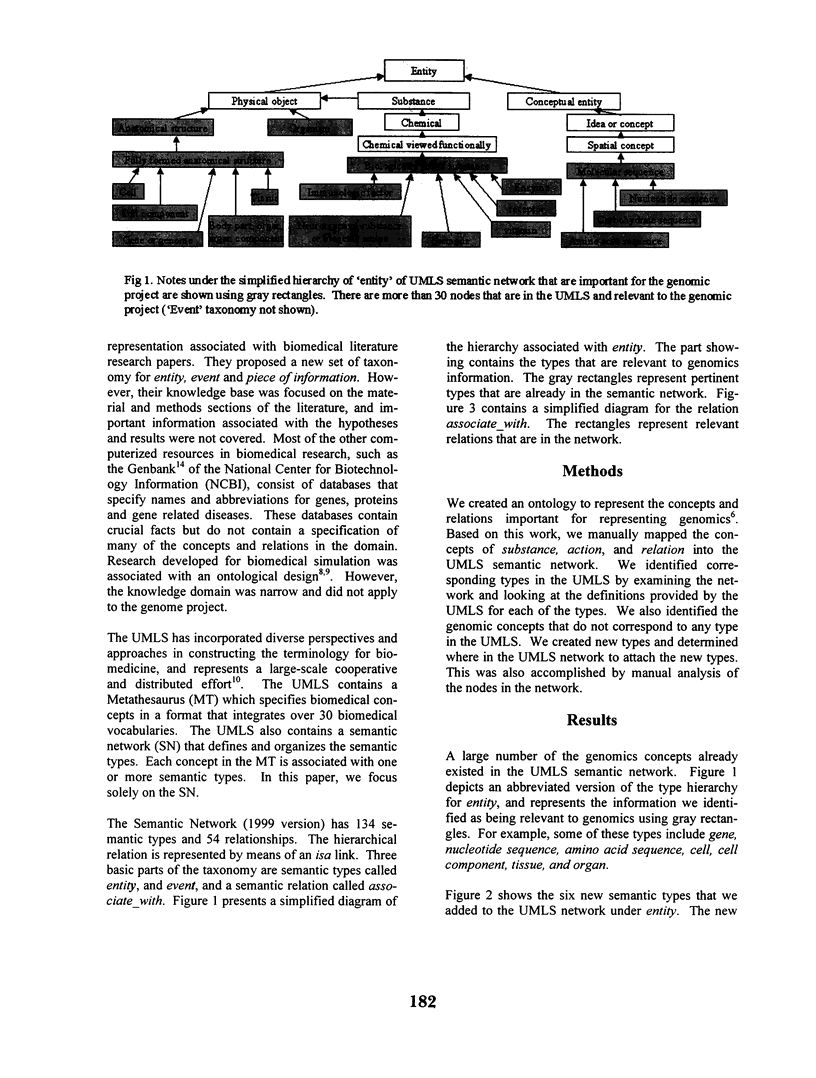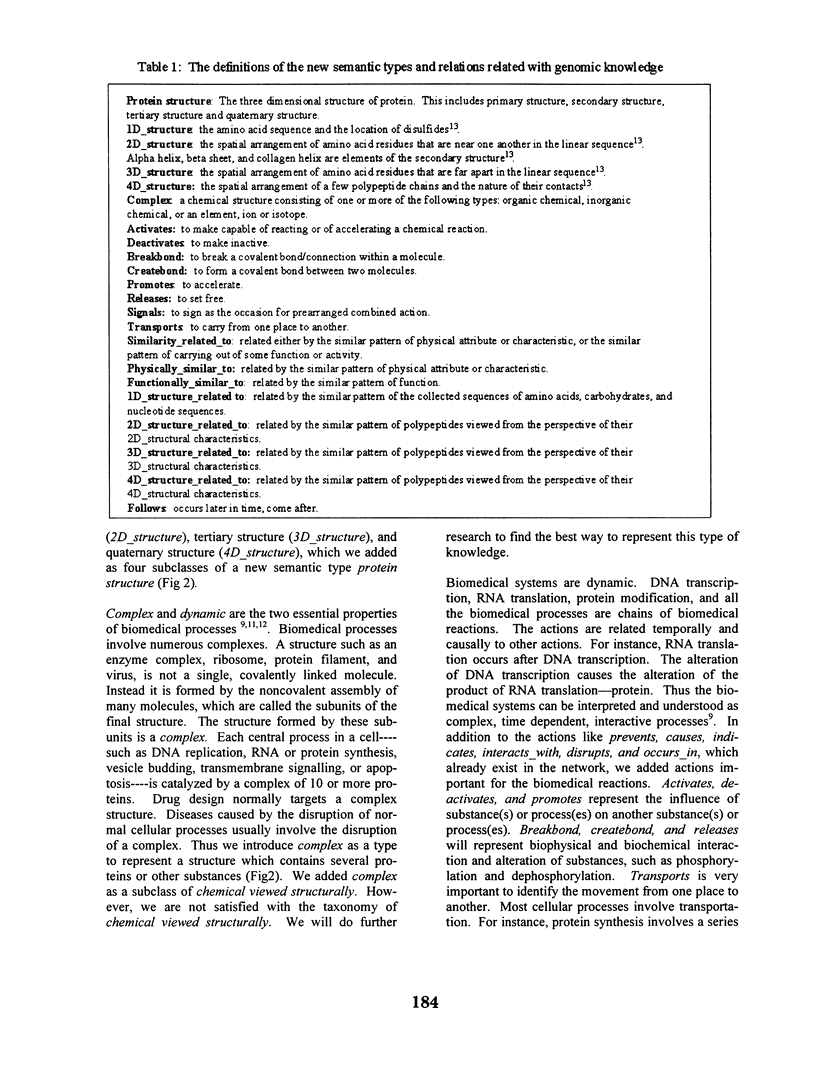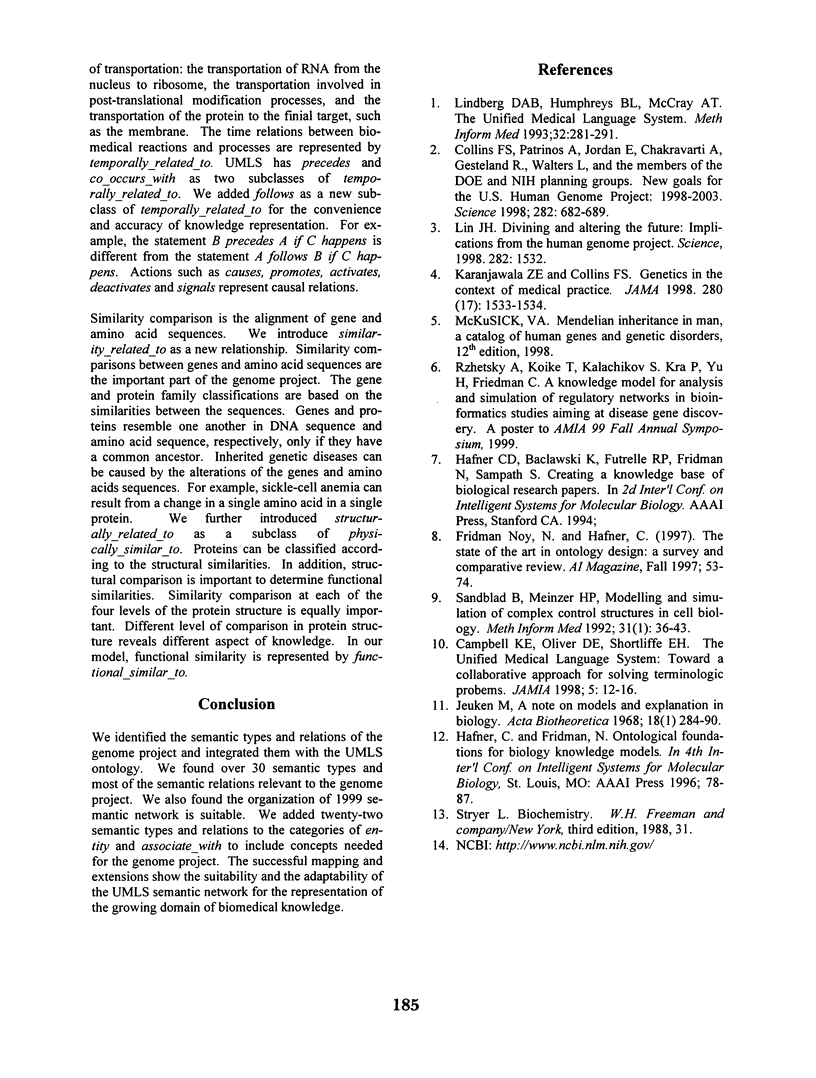Abstract
Genomics research has a significant impact on the understanding and treatment of human hereditary diseases, and biomedical literature concerning the genome project is becoming more and more important for clinicians. The Unified Medical Language System (UMLS) is designed to facilitate the retrieval and integration of information from multiple-readable biomedical information resources. This paper describes our efforts to integrate concepts important to genomics research with the UMLS semantic network. We found that the UMLS contains over 30 semantic types and most of the semantic relations that are essential for representing the underlying genomic knowledge. In addition, we observed that the organization of the network was appropriate for representing the hierarchical organization of the concepts. Because some of the concepts critical to the genomic domain were found to be missing, we propose to extend the network by adding six new semantic types and sixteen new semantic relations.
Full text
PDF




Selected References
These references are in PubMed. This may not be the complete list of references from this article.
- Campbell K. E., Oliver D. E., Shortliffe E. H. The Unified Medical Language System: toward a collaborative approach for solving terminologic problems. J Am Med Inform Assoc. 1998 Jan-Feb;5(1):12–16. doi: 10.1136/jamia.1998.0050012. [DOI] [PMC free article] [PubMed] [Google Scholar]
- Collins F. S., Patrinos A., Jordan E., Chakravarti A., Gesteland R., Walters L. New goals for the U.S. Human Genome Project: 1998-2003. Science. 1998 Oct 23;282(5389):682–689. doi: 10.1126/science.282.5389.682. [DOI] [PubMed] [Google Scholar]
- Hafner C. D., Fridman N. Ontological foundations for biology knowledge models. Proc Int Conf Intell Syst Mol Biol. 1996;4:78–87. [PubMed] [Google Scholar]
- Jeuken M. A note on models and explanation in biology. Acta Biotheor. 1968;18(1):284–290. doi: 10.1007/BF01556731. [DOI] [PubMed] [Google Scholar]
- Karanjawala Z. E., Collins F. S. Genetics in the context of medical practice. JAMA. 1998 Nov 4;280(17):1533–1534. [PubMed] [Google Scholar]
- Lin J. H. Divining and altering the future: implications from the Human Genome Project. JAMA. 1998 Nov 4;280(17):1532–1532. [PubMed] [Google Scholar]
- Lindberg D. A., Humphreys B. L., McCray A. T. The Unified Medical Language System. Methods Inf Med. 1993 Aug;32(4):281–291. doi: 10.1055/s-0038-1634945. [DOI] [PMC free article] [PubMed] [Google Scholar]
- Sandblad B., Meinzer H. P. Modelling and simulation of complex control structures in cell biology. Methods Inf Med. 1992 Feb;31(1):36–43. [PubMed] [Google Scholar]


